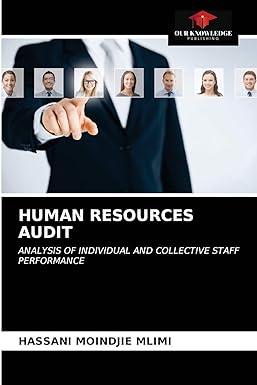Using the annual financial report obtained for Bxercise 11, answer the following questions: a. Review the Statement of Net Position for the proprietary funds. Is the Net Position or the Balance Sheet format used? List the major enterprise funds from that statement. Is the statement classified between current and noncurrent assets and liabilities? Is net position broken down into the three classifications shown in your text? Is a separate column shown for internal service funds? b. Review the Statement of Revenues, Expenses, and Changes in Net Position for the proprietary funds. Is the "all-inclusive" format used? Are revenues reported by source? Are expenses (not expenditures) reported by function or by object classification? Is depreciation reported separately? Is operating income, or a similar title, displayed? Are nonoperating revenues and expenses shown separately after operating income? Are capital contributions, extraordinary and special items, and transfers shown separately? List any extraordinary and special items. c. Review the Statement of Cash Flows for the proprietary funds. List the four categories of cash flows. Are they the same as shown in the text? Are interest receipts reported as cash flows from investing activities? Are interest payments shown as financing activities? Is the direct method used? Is a reconciliation shown from operating income to net cash provided by operations? Are capital assets acquired from financing activities shown as decreases in cash flows from financing activities? Does the ending cash balance agree with the cash balance shown in the Statement of Net Position (note that restricted assets may be included)? d. If your government has a CAFR, look to any combining statements and list the nonmajor enterprise funds. List the internal service funds. e. Examine the financial statements from the point of view of a financial analyst. Write down the unrestricted net position balances for each of the major enterprise funds and (if you have a CAFR) the nonmajor enterprise funds and internal service funds. Look at the long-term debt of major enterprise funds. Can you tell from the statements or the notes whether the debt is general obligation or revenue in nature? Write down the income before contributions, extraordinary items, special items, and transfers for each of the funds. Compare these numbers with prior years, if the information is provided in your financial statements. Look at the transfers. Can you tell if the general government is subsidizing or is subsidized by enterprise funds? Using the annual financial report obtained for Bxercise 11, answer the following questions: a. Review the Statement of Net Position for the proprietary funds. Is the Net Position or the Balance Sheet format used? List the major enterprise funds from that statement. Is the statement classified between current and noncurrent assets and liabilities? Is net position broken down into the three classifications shown in your text? Is a separate column shown for internal service funds? b. Review the Statement of Revenues, Expenses, and Changes in Net Position for the proprietary funds. Is the "all-inclusive" format used? Are revenues reported by source? Are expenses (not expenditures) reported by function or by object classification? Is depreciation reported separately? Is operating income, or a similar title, displayed? Are nonoperating revenues and expenses shown separately after operating income? Are capital contributions, extraordinary and special items, and transfers shown separately? List any extraordinary and special items. c. Review the Statement of Cash Flows for the proprietary funds. List the four categories of cash flows. Are they the same as shown in the text? Are interest receipts reported as cash flows from investing activities? Are interest payments shown as financing activities? Is the direct method used? Is a reconciliation shown from operating income to net cash provided by operations? Are capital assets acquired from financing activities shown as decreases in cash flows from financing activities? Does the ending cash balance agree with the cash balance shown in the Statement of Net Position (note that restricted assets may be included)? d. If your government has a CAFR, look to any combining statements and list the nonmajor enterprise funds. List the internal service funds. e. Examine the financial statements from the point of view of a financial analyst. Write down the unrestricted net position balances for each of the major enterprise funds and (if you have a CAFR) the nonmajor enterprise funds and internal service funds. Look at the long-term debt of major enterprise funds. Can you tell from the statements or the notes whether the debt is general obligation or revenue in nature? Write down the income before contributions, extraordinary items, special items, and transfers for each of the funds. Compare these numbers with prior years, if the information is provided in your financial statements. Look at the transfers. Can you tell if the general government is subsidizing or is subsidized by enterprise funds








